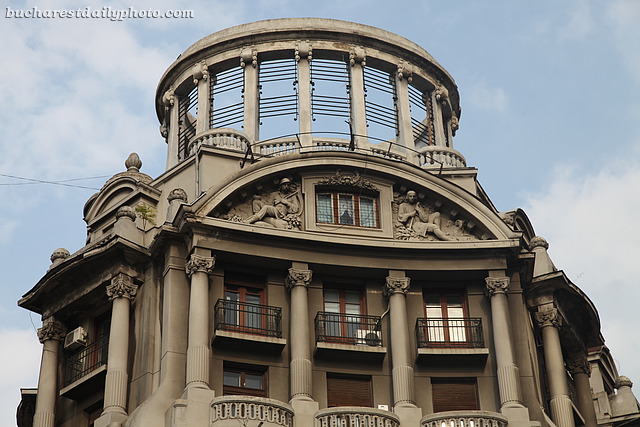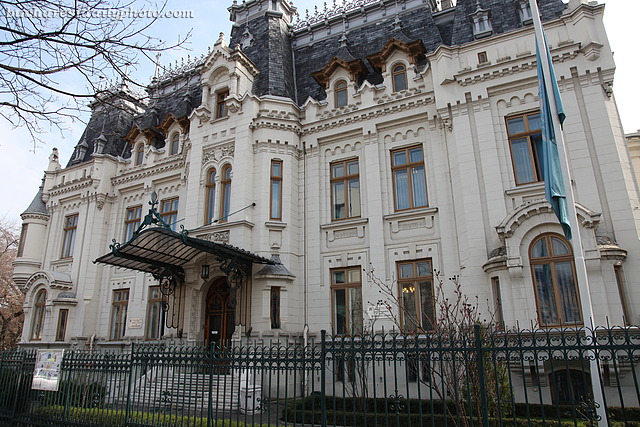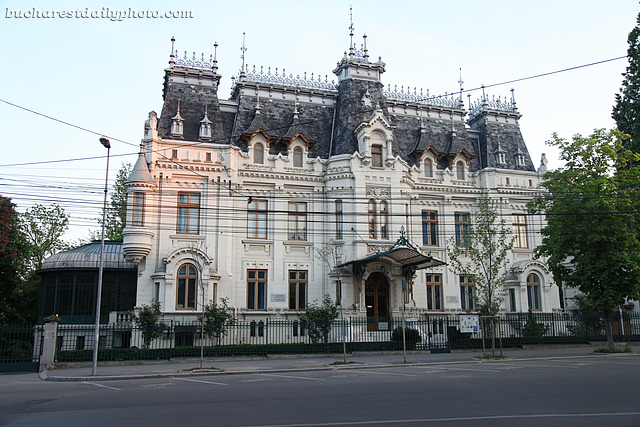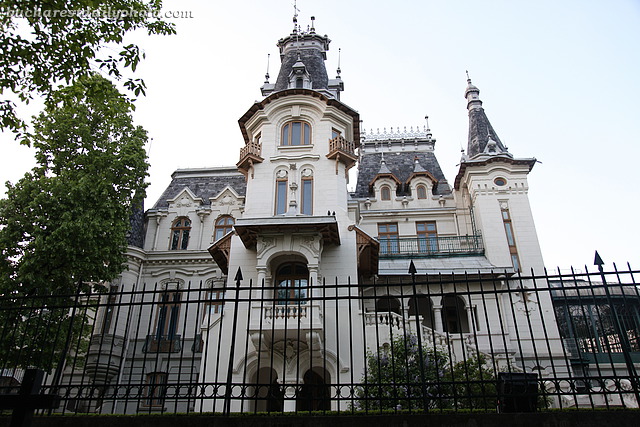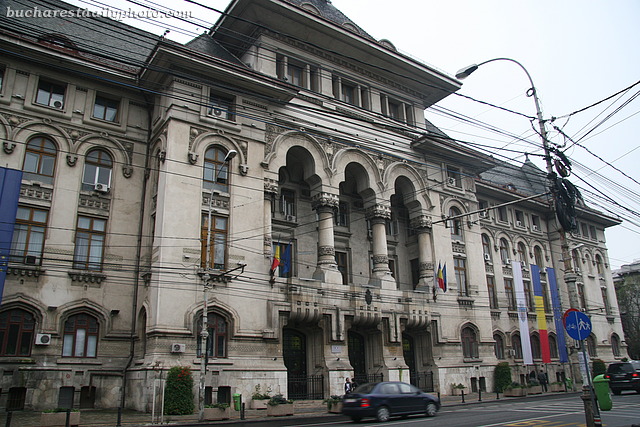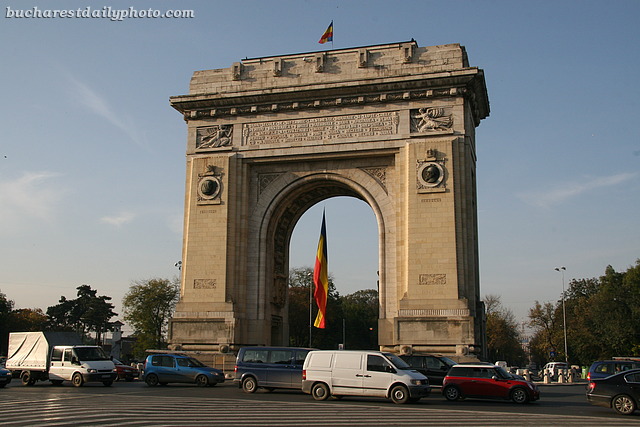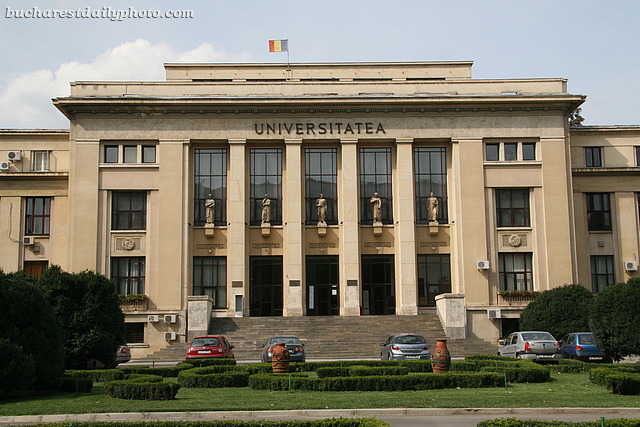The top of the Adriatica Trieste building, by architect Petre Antonescu.
The beautiful palace which is the subject of today’s photo was built in 1902-1906 as a residence for Elena Kretzulescu (aka Elena Creţulescu) by architect Petre Antonescu (1873-1965). It replaced the old family house, which was built around 1718. The palace’s facade is aligned with Ştirbei Vodă Street while the back looms over Cişmigiu Park from a small hill. Purchased in 1927 by city hall, the building was used for various purposes: from 1928-1929 it housed the office of the Prime Minister, followed by the Museum of Religious Art which was closed in 1946 when the communists came to power. Since 1972 the palace has been the seat of UNESCO European Centre for Higher Education. As with many other palaces in Bucharest the architectural style is Eclectic with touches of French Renaissance, which was very much in fashion in Bucharest at the end the 19th century.
The back of the palace seen from Cişmigiu park:
Bucharest City Hall is housed in a beautiful building lying across from Cişmigiu Park on Regina Elisabeta boulevard. This is where the good and bad decisions regarding Bucharest are taken. The edifice was built during the years 1906 to 1910 after a design by architect Petre Antonescu and used to house the Ministry of Public Works. The city hall was installed here after WWII when the building, severely damaged by the bombings, was reconstructed and enlarged by Petre Antonescu. This is a fine example of the Neo-Romanian style of architecture, which was very popular in Bucharest at the beginning of the 20th century. The Neo-Romanian was the answer to the attempts of creating a national style in Romanian architecture. It blends together elements from the local peasant architectural tradition with Byzantine and Ottoman elements and late Italian Renaissance themes. If you want to read more about this style, you can find an excellent article here.
Bucharest’s Triumphal Arch (Arcul de Triumf in Romanian) lies in a very busy intersection in northern Bucharest. Designed by the architect Petre Antonescu, the structure was erected in 1935-1936 to commemorate the creation of Greater Romania which took place in 1918. This arch is the third triumphal arch built in Bucharest. The first arch made of wood and cardboard was erected in a rush in 1878 to mark Romania’s independence from the Turks. Victorious troops marched under it on their arrival in Bucharest. This first arch was replaced by a second one, located on the same spot as the current arch and also designed by Petre Antonescu. It was erected in 1922 to mark Ferdinand’s entry into Bucharest as the first king of Greater Romania. In 1935 the arch was in pretty bad shape so it was thoroughly renovated and became the structure that we see today, built of concrete and granite. Portraits of King Ferdinand and Queen Marie decorate one face, while the names of battles fought by Romanians during the First World War can be seen on the other face. The portraits of the king and queen were removed during the communist rule but they were readded in 1992. The sculptures decorating the arch were created by leading artists of the day, including Ion Jalea, D. Onofrei and Constantin Baraschi. Sometimes, on special occasions, the arch is open for visitation.
In the last few years Bucharest’s Triumphal Arch became the site of a strange wedding ritual which I won’t tell you about right now, on the hope that one of these days I’ll make a photo that would better tell the story. If you’re really curious and want a sneak peak just follow these youtube links: one and two.
This serious looking building is Bucharest’s Law Faculty which is part of the University of Bucharest. It was designed by architect Petre Antonescu in neoclassical style and was finished in 1935. On the facade are the statues of five great lawmakers, lawyers and jurists of the ancient times: Lycurgus of Sparta, Solon, Cicero, Papinian and Justinian. The statues are the work of sculptors Ion Jalea and Costin Georgescu. Romania’s Civil Code is based on the Napoleonic Code (the French Civil Code) established under Napoléon I in 1804, which was adopted by Romania in 1864 (with some modifications) and is still in use.
